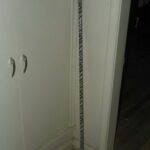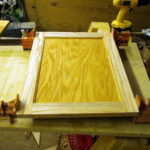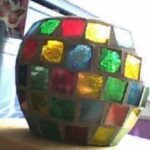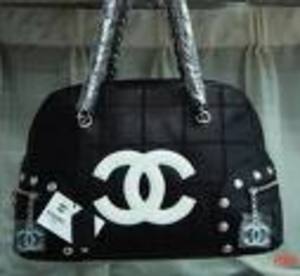In order to create a stained glass suncatcher, panel or window, you need to work with patterns. In our glass studio, we have developed some basic rules for preparing and working with patterns to assure they will last as long as you need them, and also help you make a great finished product.
The First Step
Of course, the first step is to choose your pattern. Check out the variety of free pattern sites online, buy a pattern book, or ask your local stained glass supplier for some great patterns. Pick the one that suits your needs, and print a basic copy.
Make it Fit
Once we choose a pattern, we determine the size we need to make the finished product we have chosen. In some cases, a local copy store will be able to help you reduce or enlarge your pattern. We have a great relationship with a local blueprint company, and find they have the best tools to re-size patterns to fit our specifications.
To resize patterns, you have a variety of other solutions as well:
- You can use a copy machine if you have one in your studio or have access to someone’s office copier.
- Some folks prefer to use an overhead projector to project the pattern on the wall and enlarge it to the proper size, then trace it.
- The more computer savvy among us prefer to use a photo image software, scanning their pattern into the program, then resizing and printing it out in “tiles.” (That is, separate sheets of paper, each having a section of the pattern.) The tiles are then assembled in the proper order to create the larger pattern.
- Glass Eye is a program specifically designed for use by stained glass artists to resize their patterns. It is available, in various versions, online. It also has a section which allows you to see your pattern with specific glass companies’ colors and textures applied.
Prepare the Pattern
You should first number each pattern piece, using a code of your choice. We generally do something like this: for sky pieces, we use s-1, etc. For leaves, we use L-1, etc. You determine which numbering system works for you.
This is also the time to make notes on the pattern that will help you lay out the pieces to best advantage. Is there a right way to lay out pieces so the grain (direction in which the glass seems to be flowing) is consistent throughout the panel? Mark it with arrows that indicate that direction.
Get it Copied
Once you determine where to get your pattern sized, be sure to get at least 2 copies made. One will be cut into separate pieces for tracing on your glass, the other will be the base on which you build your finished piece. We generally make another extra copy or two just in case there is some problem that destroys part or all of the pattern as we work with it.
Make it Pretty
Sometimes, if a pattern is tricky or has areas that are not clearly defined, we will color code
the pattern pieces. (Jim even likes to use colored pencils to shade the whole pattern if it helps in the layout.) At this point, your pattern should be ready to actually use.
The Final Stages
Our next step is to cover the patterns with contact paper or other clear plastic film. The one to be cut up will last longer this way, and the one which will form the base is protected by the film.
Lay the coated base pattern on your work board and place “L” channel around the edges to help you stay within your size range. This will be the absolute edge of your piece, and all the glass must fit inside it.
Cut up the second pattern and place the pieces in a large envelope, file or other storage container so nothing is lost. We generally put all similar pieces in one envelope (all sky pieces together, all water pieces together, etc.). This allows you to easily find them if you need to re-cut a piece. It also helps you when you lay out the pattern pieces on your glass for tracing.
By carefully preparing your patterns in advance, you will have less trouble in the piecing and cutting of your glass, and you will also have a good pattern to use if you decide to make the same piece again at another time.







